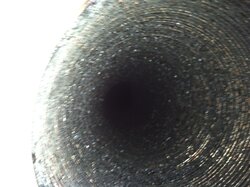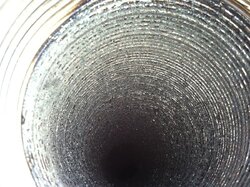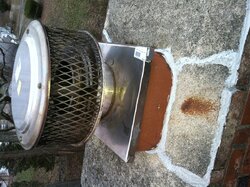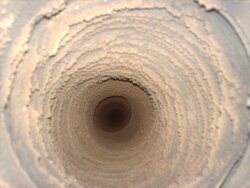I've burned about 15 days since installing my insert and was curious what my liner looked like at the top. I popped the cap off and was surprised to see what looks like a lot build up for such a short amount of burning. I am burning all Ash that is reading between 12-20% on freshly split face with a Harbor Freight meter. Liner is 19 feet long, insulated, and in an exterior chimney. This is my first season burning wood and I've definitely had more smoldering than I would like, especially on start ups/reloads but once it is cruising there is no visible smoke. What do you think?
Additional detail edit:
I have a metal blockoff plate at the bottom with roxul above it but no roxul underneath the top plate.
Additional detail edit:
I have a metal blockoff plate at the bottom with roxul above it but no roxul underneath the top plate.
Attachments
Last edited:





